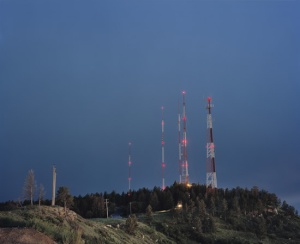This is a collaboration for “Lines of Sight” by philosopher and pioneer of mini FM radio, Tetsuo Kogawa, and sound artist Yasunao Tone, based on an email exchange on radioart.
When we were asked to make a radio collaboration for Radio web MACBA, we decided to use an email exchange on radioart, vocalize the text, and then both of us play it live in performance.
Our collaboration started as argument on temporality, which was my fault because I started this difficult topic and it made our dialog into hastily scribbled heavy-handed letter exchanges rather than crisp emails. After we became aware of that, we began scribbling our thought by using the email format and keyboards. So, in accordance with Kogawa’s insistence on hands, we have literally thought on a column of email by hands. Regrettably, our native language is Japanese and we have been forced to speak a language we seldom use when we dream so we couldn’t play with words. However, I tried to add playfulness by vocalizing with a synthetic voice program from Mac’s “Simple Text” and burned it onto CDR. Then I prepared the CDR (so called scratching) and played it with my old CD player. Unfortunately we couldn’t practice our program as radioart because Radio web MACBA has no format for live broadcasting from Tokyo and New York. We present our collaboration in this recorded form.
Yasunao Tone




